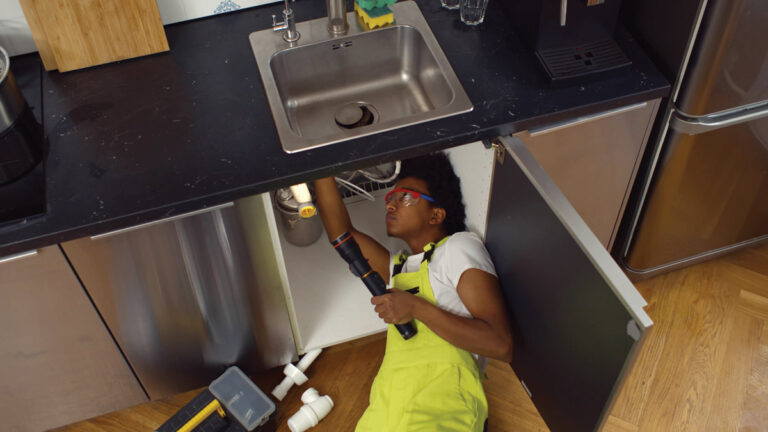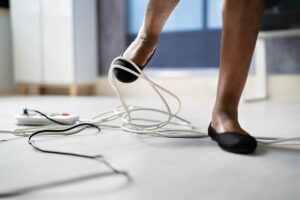As we approach the holiday season, the number of hours spent in the kitchen increases as many of us prepare feasts for families and bake sweet treats. Before the cooking and baking begins, be sure to check your kitchen for safety hazards.
Cooking equipment fires are more common than you might think. According to the National Fire Protection Association (NFPA), U.S. fire departments respond to more than 158,000 home fires every year that are started by cooking activities.
Unattended cooking is the leading cause of kitchen fires, according to a study by the NFPA, and homes with electric ranges have a higher risk of cooking fires. So, always stay in the kitchen when frying, grilling, boiling or broiling food. Keep anything that can catch fire, including oven mitts, food wrappers, towels and wooden utensils, away from the cooking surface.
There’s also another cooking safety hazard that’s often overlooked, and that’s using appliances that are faulty or those that have damaged cords or plugs. Make sure appliances are in good working condition, and never use an appliance that is in disrepair or one that’s already lived a full and productive life.
Inspect all small appliances and electric cords to make sure they are in good condition before using. Do not use appliances with cracked or frayed cords. Small appliance lifespan depends greatly on how often you use it and how you maintain it. In general, the average life expectancy of most small kitchen appliances is 5-10 years. So, if your appliances have some age on them, you might want to consider replacing them.
When purchasing new kitchen appliances, look for UL-certified appliances with automatic shut-off features. Read the operating instructions of any appliance before use, and never plug more than one high-wattage appliance into a single outlet.
Make sure your appliances are plugged into a GFCI (ground fault circuit interrupter) outlet. When working properly, the GFCI senses any power flow imbalances and trips the circuit. These should be tested monthly to ensure they are working.
While in the kitchen, keep cooking areas clear of other items, particularly flammable items. Keep the area clean and free of grease. Stay focused and attentive to baking, frying, brewing and simmering foods. Always have a working fire extinguisher on hand and know how to operate it.
Be alert to other safety considerations when working in the kitchen. Flickering or dimming lights and monitors, sparks from appliances or outlets, and wall plates, plugs or cords that are warm to the touch are all warning signs that demand immediate attention. If you spot an electrical danger, make sure to unplug the malfunctioning appliance immediately and have it repaired or replaced.
Although not necessarily a safety issue, always unplug small appliances when not in use to prevent unnecessary energy consumption, especially if the appliance has LED displays or other standby energy-consuming features. For more electrical safety tips, visit SafeElectricity.org.










